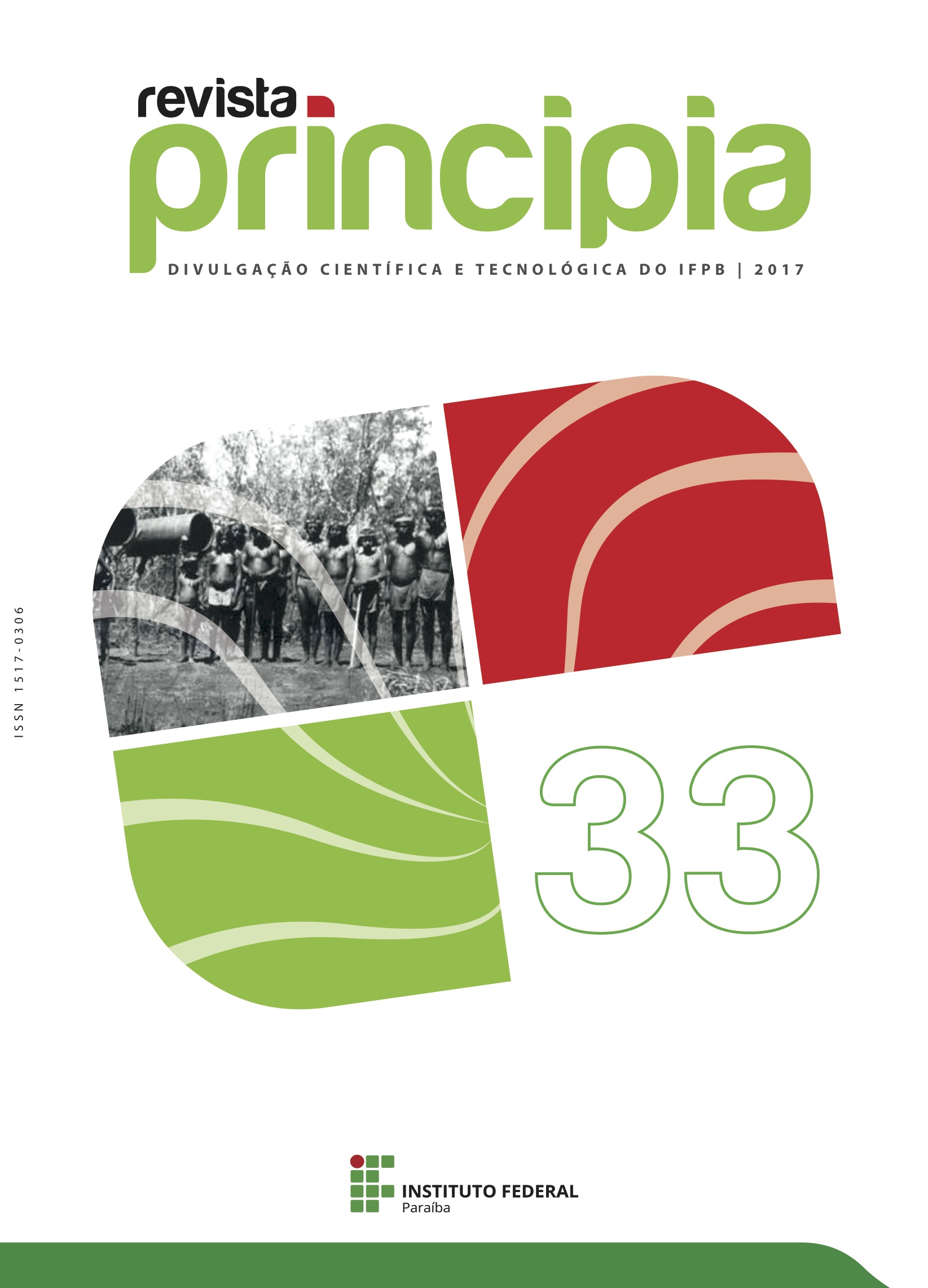Dez pontos sobre apresentações de slides, suas características e implicações para a prática docente
DOI:
https://doi.org/10.18265/1517-03062015v1n33p58-66Palavras-chave:
Apresentações de slides, Prática docente, Artefatos didáticos, PowerPointResumo
Neste artigo, descrevemos em dez tópicos aspectos importantes sobre as apresentações de slides, que envolvem: (a) a definição desse artefato; (b) suas características, atreladas ao seu desenvolvimento histórico; (c) algumas críticas e problematizações da sua estrutura e uso; (d) resultados de pesquisas empíricas do seu uso no contexto educacional; e (e) recomendações para melhores práticas na formatação de apresentações de slides. A fonte de obtenção dos dados foi a revisão bibliográfica de diversos artigos e livros das áreas, sobretudo da Educação, da Administração e da Psicologia Cognitiva.Downloads
Métricas
Referências
ANNETA, L. A.; SLYKHUIS, D.; WIEBE, E. EyeTracking Students’ Attention to PowerPoint Photographs in a Science Education Setting. Journal of Science Education and Technology, v. 14, n. 5, p. 509-520, 2005.
ATKINSON, C. Beyond Bullet Points: Using Microsoft PowerPoint to Create Presentations That Inform, Motivate, and Inspire. Redmond: Microsoft, 2011.
BARTSCH, R. A.; COBERN, K. M. Effectiveness of PowerPoint Presentations in Lectures. Computers and Education, v. 41, n. 1, p. 77-87, 2003.
BLOKZIJL, W.; ANDEWEG, B. The effects of text slide format and presentational quality on learning in college lectures. IN: IEEE INTERNATIONAL PROFESSIONAL COMMUNICATION CONFERENCE. Proceedings of the IEEE International Professional Communication Conference, p. 288–299, 2005.
BURKE, L. A.; JAMES, K. E. PowerPoint-based lectures in business education: an empirical investigation of student-perceived novelty and effectiveness. Business Communication Quarterly, v. 71, n. 3, p. 277-296, 2008.
COUTINHO, S. G. Ensina Design: A introdução de conteúdos de Design Gráfico no currículo do Ensino Fundamental Brasileiro. 2011. Relatório final da pesquisa aprovado pelo CNPq (não publicado) – Departamento de Design, UFPE, Recife – Brasil.
DOUMONT, J. The cognitive style of PowerPoint: Slides are not all evil. Technical Communication, v. 52, n. 1, p. 64-70, 2005.
DUARTE, N. Slideology – A arte e a ciência para criar apresentações que impressionam. São Paulo: Universo do Livro, 2010.
FARKAS, D. K. Toward a better understanding of PowerPoint deck design. Information Design Journal + Document Design, v. 4, n. 2, p. 162-171, 2006.
GOLD, R. Reading PowerPoint. Working with words and images: New steps in an old dance, p. 256-270. Westport: Ablex. 2002.
GODIN, S. Really bad PowerPoint (and how to avoid it). Do You Zoom, Inc. 2001. Disponível em: www.sethgodin.com/freeprize/reallybad-1.pdf. Acesso em: 23 mar. 2013.
GRECO, M. et al. On the Portability of Computer Generated Presentations: The Effect of Text-Background Color Combinations on Text Legibility. Human Factors: The Journal of the Human Factors and Ergonomics Society, v. 50, p. 821-833, 2008.
HARKNETT, R. J.; COBANE, C. T. Introducing instructional technology to international relations. Political Science and Politics, v.30, p. 496-500. 1997.
JAMET, E. Peut-on concevoir des documents électroniques plus efficacies? L’exemple des diaporamas. Revue européene de psychologie apliquée, v. 58, p. 185-198, 2009.
KALYUGA, S.; CHANDLER, P.; SWELLER, J. Managing split-attention and redundancy in multimedia instruction. Applied Cognitive Psychology, v. 13, p. 351-371, 1999.
LOPES, M. T. A linguagem gráfica na educação brasileira: um estudo para a sua inserção na formação dos professores das licenciaturas. 2009. Dissertação (Mestrado em Design da Informação) – Universidade Federal de Pernambuco, Programa de Pós-Graduação em Design, Recife, 2009.
LOWRY, R. B. Electronic presentation of lectures-effect upon student performance. University Chemistry Education, v. 3, n. 1, p. 18-21, 1999.
MARSH, E. J.; SINK, H. E. Access to handouts of presentation slides during lecture: consequences for learning. Applied Cognitive Psychology, v. 24, p. 691-706, 2009.
MOLLERUP, P. PowerNotes: slide presentations reconsidered. E-book. Melbourne: IIID – International Institute for Information Design, 2011. Disponível em: http://hdl.handle.net/1959.3/191214. Acesso em: 7 jun. 2011.
MORENO, R.; MAYER, R. Interactive Multimodal Learning Environments. Educational Psychology Revue, v. 19, p. 309-326, 2007.
PARADI, D. Results of the 2011 Annoying PowerPoint survey. 2011. Disponível em: http://www.thinkoutsidetheslide.com/free-resources/latest-annoyingPowerPoint-survey-results/. Acesso em: 03 fev. 2013.
PARKER, I. Absolute PowerPoint: can a software package edit our thoughts? The New Yorker. Annals of Business. 2001. Disponível em: http//www.newyorker.com/archive. Acesso em: 03 mar. 2013.
SHWOM, B. L.; KELLER, K. P. “The great man has spoken. Now what do I do?” A response to Edward R. Tufte’s “The cognitive style of PowerPoint.” Communication Insight, v. 1, n. 1, p. 1-16, 2003.
SZABO, A; HASTINGS, N. Using IT in the undergraduate classroom: Should we replace the blackboard with PowerPoint? Computers & Education, v. 35, p. 175-187, 2000.
TUFTE, E. The cognitive style of PowerPoint: Pitchin Out Corrupts Within. Connecticut: Graphics Press, 2008.
VIEIRA, A. R. F. V. Retórica e Multimodalidade do PowerPoint Educativo. 2011. Tese (Doutorado em Letras) – Universidade Federal de Pernambuco, Departamento de Letras, Recife, 2011.
WECKER, C. Slide presentations as speech supressos: When and why learners miss oral information. Computers and education, v. 59, p. 260-273, 2012.
YATES, J.; ORLIKOWSKI, W. J. The PowerPoint presentation and its corollaries: How genres shape communicative action in organizations. The cultural turn: Communicative practices in workplaces and the professions. Amityville, NY: Baywood Publishing. 2006.
Downloads
Publicado
Como Citar
Edição
Seção
Licença
Esta revista, seguindo as recomendações do movimento de Acesso Aberto, proporciona seu conteúdo em Full Open Access. Assim os autores conservam todos seus direitos permitindo que a Revista Principia possa publicar seus artigos e disponibilizar pra toda a comunidade.
A Revista Principia adota a licença Creative Commons 4.0 do tipo atribuição (CC-BY). Esta licença permite que outros distribuam, remixem, adaptem e criem a partir do seu trabalho, inclusive para fins comerciais, desde que lhe atribuam o devido crédito pela criação original.
Os autores estão autorizados a enviar a versão do artigo publicado nesta revista em repositório institucionais, com reconhecimento de autoria e publicação inicial na Revista Principia.
Demais informações sobre a Política de Direitos Autorais da Revista Principia encontram-se neste link.
























 (precisa estar logado)
(precisa estar logado)






